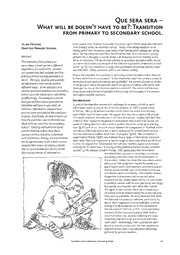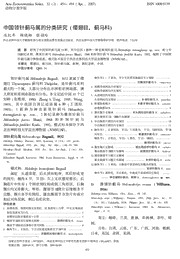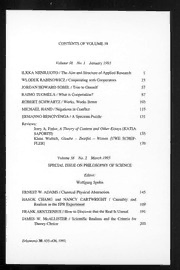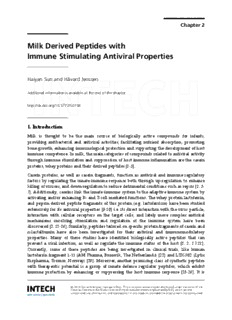
Milk Derived Peptides with Immune Stimulating Antiviral Properties PDF
Preview Milk Derived Peptides with Immune Stimulating Antiviral Properties
We are IntechOpen, the world’s leading publisher of Open Access books Built by scientists, for scientists 4,000 116,000 120M Open access books available International authors and editors Downloads Our authors are among the 154 TOP 1% 12.2% Countries delivered to most cited scientists Contributors from top 500 universities Selection of our books indexed in the Book Citation Index in Web of Science™ Core Collection (BKCI) Interested in publishing with us? Contact book.department@intechopen.com Numbers displayed above are based on latest data collected. For more information visit www.intechopen.com Chapter 2 Milk Derived Peptides with Immune Stimulating Antiviral Properties Haiyan Sun and Håvard Jenssen Additional information is available at the end of the chapter http://dx.doi.org/10.5772/50158 1. Introduction Milk is thought to be the main source of biologically active compounds for infants, providing antibacterial and antiviral activities, facilitating nutrient absorption, promoting bone growth, enhancing immunological protection and supporting the development of host immune competence. In milk, the main categories of compounds related to antiviral activity through immune stimulation and suppression of host immune inflammation are the casein proteins, whey proteins and their derived peptides [1-3]. Casein proteins, as well as casein fragments, function as antiviral and immune regulatory factors by regulating the innate immune response both through up-regulation to enhance killing of viruses, and down-regulation to reduce detrimental conditions such as sepsis [1, 3- 7]. Additionaly, caseins link the innate immune system to the adaptive immune system by activating and/or enhancing B- and T-cell mediated functions. The whey protein lactoferrin, and pepsin derived peptide fragments of this protein (e.g. lactoferricin) have been studied extensively for its antiviral properties [8-10] i.e. its direct interaction with the virus particle, interaction with cellular receptors on the target cells, and lately more complex antiviral mechanisms involving stimulation and regulation of the immune system have been discovered [2, 11-16]. Similarly, peptides tailored on specific protein fragments of casein and α-lactalbumin have also been investigated for their antiviral and immunomodulatory properties. Many of these studies have identified biologically active peptides that can prevent a viral infection, as well as regulate the immune status of the host [1, 2, 17-21]. Currently, some of these peptides are being investigated in clinical trials, like human lactoferrin fragment 1-11 (AM Pharma, Bunnvik, The Netherlands) [22] and LTX-302 (Lytix Biopharma, Tromsø, Norway) [20]. Moreover, another promising class of synthetic peptides with therapeutic potential is a group of innate defence regulator peptides, which exhibit immune protection by enhancing or suppressing the host immune response [23-26]. It is © 2012 Sun and Jenssen; licensee InTech. This is an open access chapter distributed under the terms of the Creative Commons Attribution License (http://creativecommons.org/licenses/by/3.0), which permits unrestricted use, distribution, and reproduction in any medium, provided the original work is properly cited. 46 Milk Protein tremendously encouraging that many of these proteins and peptides have pharmaceutical potential within antiviral and anticancer therapy, as vaccine adjuvants, as immunosuppressants for the treatment of autoimmune diseases and in conjunction with organ transplantation, etc. [20, 23-25, 27-29]. Studies have demonstrated that active milk protein and peptide compounds can be extracted from a variety of species including humans, bovine, porcine, mice and camel. The main focus in this paper is the antiviral and immune regulating properties (Table 1) of milk proteins (Table 2) and their peptide derived fragments (Table 3). The vast majority of the discussed studies deal with proteins and peptides of bovine origin, and these will be referenced with their protein names, while proteins and peptides from other origins will be explicitly specified with the species name. Virus Protein or peptide Model of antiviral function Reference Enveloped Virus Herpes simplex human and bovine Binding to both virus particle [9, 35, 55, 77- virus 1 lactoferrin and lactoferricin, and cellular receptors (heparan 79, 81-83] lactoperoxidase sulphate) to prevent viral chemically modified milk adsorption and entry; [89, 93, 99, proteins e.g. serum albumin, Interference with intracellular 100] α-lactalbumin, replication events or synthesis β-lactoglobulin of progeny viral components Herpes simplex human and bovine Binding to virus receptor of [10] virus 2 lactoferrin non-GAG nature -lactoglobuline Binding to virus particle [93] Hepatitis C virus lactoferrin Binding to viral envelope [52, 63, 71, protein E1 and E2 220] Hepatitis B virus iron- or zinc-saturated Binding to cellular molecules [47, 59] lactoferrin interfering with viral attachment/entry Hepatitis G virus lactoferrin Unknown [63] Respiratory syncytial lactoferrin, lactoperoxidase Binding to F1 subunit of RSV F [35, 44-46] virus protein to inhibit viral absorption Human human and bovine Binding to cellular receptor to [8, 18, 19, 34, immunodeficiency lactoferrin, lactoperoxidase inhibit viral absorption and 48, 49, 62, 68, virus replication 70] chemically modified milk [9, 89-92] proteins like serum albumin, α-lactalbumin, β-lactoglobulin Influenza virus lactoferrin, κ-casein, Binding to hemagglutinin of [36, 53, 135] (H3N2, H1N1 and glycomacropeptide, virus H5N1) lactoperoxidase modified human serum [94, 101-103] Milk Derived Peptides with Immune Stimulating Antiviral Properties 47 Virus Protein or peptide Model of antiviral function Reference albumin and β-lactoglobulin, α-lactalbumin, lactoferrin Human lactoferrin and lactoferricin Interfere with virus target cells; [12-16] cytomegalovirus up-regulation of killer cells; synergistic antiviral effect with cidofovir chemically modified milk Binding to virus particle [12, 93, 96, proteins like serum albumin, 221] α-lactalbumin, β-lactoglobulin Feline herpes virus 1 human and bovine Binding to cellular molecules [54] lactoferrin Canine herpes virus human and bovine Binding to virus particle and [74] lactoferrin (apo- and holo-) cellular receptor on target cell Hantavirus lactoferrin Binding to cellular molecules; [72, 122] synergistic effect with Ribavirin on inhibiting viral replication Vesicular stomatitis lactoferrin Induction interferon-α/β [11] virus expression to inhibit viral replication Friend virus human lactoferrin Regulation on the myelopoiesis; [11, 56, 57, complex synergistic effect with 64] interferon-γ Human human and bovine Binding to heparan sulphate [65, 121] papillomavirus lactoferrin, cell receptor human and bovine lactoferricin Alphavirus heparan human lactoferrin, charge- Binding toheparan sulphate [73] sulphate- adapted modified human serum cell receptor sindbis virus and albumin semliki forest virus Severe acute lactoferrin Binding to heparan sulphate [120] respiratory cell receptor syndrome coronavirus Non-enveloped virus Rotavirus human lactoferrin (apo- Binding to viral particles to [30, 40] /holo-), α-lactalbumin, prevent both rotavirus β-lactoglobulin haemagglutination and viral binding to receptors on susceptible cells human lactadherin Binding to structural protein of [37, 38] rotavirus and inhibits virus replication 48 Milk Protein Virus Protein or peptide Model of antiviral function Reference high molecular glycoprotein Inhibitor for viral-cell binding [107, 108] (e.g. mucin) to prevent productive virus infection immune globulin In vivo effect on inhibition of [107] viral replication Poliovirus lactoferrin, modified bovine Binding to viral receptor on [50, 58, 104] β-lactoglobulin target cell Coxsackie virus modified bovine Binding to viral receptor on [104] β-lactoglobulin target cell Adenovirus lactoferrin Binding to viral protein III and [60, 61, 69] IIIa; competition with virus for common membrane receptors Enterovirus (71, lactoferrin Binding to both cellular [51, 66, 67] echovirus 6) receptors and the viral surface protein VP1 Felin calicivirus lactoferrin Binding to cell receptor [50] Echovirus lactoferrin, lactoperoxidase Binding to cell receptor and [35, 75, 95] viral structural proteins Table 1. Models of antiviral proteins & peptides from milk proteins 2. Protein composition of milk and their antiviral activity There are in general two groups of proteins found in milk, casein and whey. The casein family accounts for approximately 80% of the protein mass and includes several types of casein, e.g. αs1, αs2, β and κ, which form micelle complexes in the water phase of milk. The whey proteins account for the remaining 20%, and include β-lactoglobulin (not present in human milk), α-lactalbumin, serum albumin, immunoglobulins, lactoferrin, transferring, and many minor proteins. Most of the whey proteins have been demonstrated to effectively prevent viral infection. For example, milk derived proteins including α-lactalbumin, β- lactoglobulin, apo-lactoferrin (iron free), and homo-lactoferrin (Fe3+ carrying), were able to inhibit rotavirus attachment to cellular receptors by binding to the viral particle [30]. Among these proteins, apo-lactoferrin was proven to be the most active. Studies also showed that immunoglobulins of raw milk from non-immunized cows and camels, as well as from a commercially available bovine macromolecular whey protein fraction, have specific antibodies against human rotavirus, which are capable of inhibiting replication of rotaviruses in tissue culture and protect mice from infection in a murine model of rotavirus infection [31-33]. Lactoperoxidase, a haem-containing glycoprotein of the mammalian peroxidase family, is an important enzyme in the whey fraction of milk. In combination with its physiological substrates hydrogen peroxide and thiocyanate, lactoperoxidase manifests a wide spectrum of virucidal activities against human immunodeficiency virus, herpes simplex virus 1, respiratory syncytial virus and echovirus [34, 35]. Oral administration of lactoperoxidase also attenuate pneumonia in influenza virus infected mice through suppression of infiltration of the inflammatory cells in the lungs [36]. Furthermore, the 46kD Milk Derived Peptides with Immune Stimulating Antiviral Properties 49 glycoprotein termed lactadherin, also known as milk fat globule-EGF factor 8 protein, inhibited rotavirus binding to cellular receptors (acetylneuraminic acid and/or integrin) on target and/or specifically interacting with viral structural glycoprotein VP4 of rotavirus, blocking host-pathogen interaction [37-40]. Lactoferrin, first isolated in 1960 from both human [41, 42] and bovine milk [43], has been demonstrated to exhibit antiviral activity against many viruses [8, 10-16, 18, 19, 40, 44-74] (Table 2). Most studies indicate that lactoferrin and its derived peptides are likely to interfere in the virus host cell interaction (Figure 1). For example it has been demonstrated that lactoferrin is able to bind both viral receptor and the viral surface protein VP1 on enterovirus (enterovirus 71 and echovirus 6), thus interfering with viral entry [51, 66, 67, 75, 76]. Similarly, both apo- and holo-lactoferrin has been demonstrated to interact both with canine herpes virus and surface receptors on the Madin-Darby canine kidney cells, thus inhibiting canine herpes virus infection [74]. With regard to the anti-herpes simplex virus 1 ability of lactoferrin, both bovine and human lactoferrin and lactoferricin have demonstrated the ability to block viral entry and also inhibit viral cell-to-cell spread in a dose dependent manner [55, 77-79], through interaction with negatively charged glycosaminoglycans like heparan sulphate on the cell surface [55, 80-83] and elements of the viral particle [55]. Differently from herpes simplex virus 1, Marchetti et. al. found that lactoferrin inhibited herpes simplex virus 2 plaque forming activity also in cells without glycosaminoglycans suggesting that lactoferrin might block one of the specific herpes simplex virus 2 entry receptors [10]. Many of the traditional entry blocking effects observed by lactoferrin involve electrostatic interaction with anionic heparan sulphate molecules on the host cell surface [82]. The ability to interact with anionic heparan sulphate is maybe not that surprising, when evaluating the three dimensional structural composition of lactoferrin, demonstrating a rather striking cationic patch on the N-terminal lobe of the molecule [84] (Figure 1). Similarly, other highly cationic peptides have also been demonstrated to effectively interfere with herpes simplex virus attachment and entry [80, 85]. Conversely, several other milk proteins i.e. β-lactoglobulin [86], α-lactalbumin [87] are described with anionic patches on their surfaces, while the casein homologues like αs2- casein [88] have both specific anionic and cationic patches on the surface (Figure 1). Thus, charge modification of milk proteins may increase their ability to interfere with virus host cell interactions. 3-hydroxyphthalic anhydride modification of human and bovine serum albumin, and bovine β-lactoglobulin, increased the proteins negative charges in addition to their ability to prevent interaction between human immunodeficiency virus 1 envelope glycoprotein gp120 and the CD4 host cell receptor, by direct interaction and blocking of the CD4 receptor [89, 90]. Similar effects have also been observed for 3-hydroxyphthalic anhydride modified α-lactalbumin and αs2-casein, as well as for maleylated- and succinylated-human serum albumin, indicating that human immunodeficiency virus inhibition was a general property of negatively charged polypeptides [9, 91, 92]. Among the inhibitory proteins, 3-hydroxyphthalic anhydride β-lactoglobulin also demonstrated a broad 50 Milk Protein spectrum activity affecting herpes simplex virus 1 and 2 in addition to human cytomegalovirus by binding to the virus particles, inhibiting particularly the binding of monoclonal antibodies towards glycoprotein E and glycoprotein C [93]. Comparative results have been shown for anionic-modified human serum albumin and β-lactoglobulin which prevents influenza virus membrane fusion with the host cell membrane, a process mediated by the viral glycoprotein hemagglutinin [94]. Interestingly, this anti-influenza effect has not been observed for other milk proteins carrying negative charges, like succinylated bovine serum albumin, lactalbumin, lactoferrin, lysozyme and transferrin [94]. It is said that inhibition of viral fusion demonstrates a certain degree of specificity for negative charged proteins. However, addition of net negative charges to lactoferrin by acylation with either succinic- or acetic anhydride abolished its anti-poliovirus and anti-feline calicivirus activity, which may be attributed to the obliterate binding of acylated lactoferrin to the surfaces of susceptible cells [95]. Also, when negatively charged groups were added to lactoferrin by succinylation, the antiviral effect on human immunodeficiency virus 1 was increased, but the antiviral potency against human cytomegalovirus was mostly decreased [96], illustrating the proteins different modes of action. Similar results were also obtained by Florisa et. al. which demonstrated a stronger antiviral effect against human immunodeficiency virus by developing poly-anionic milk proteins, while stronger effects could be obtained against human cytomegalovirus by creating poly-cationic milk proteins [12]. Figure 1. The traditional direct antiviral mechanismes of selected milk proteins. Several proteins are characterized to interact directly with cell surface heparan sulphate, like lactoferrin (1) and lactoperoxidase. Casein species like -casein (3) and s2-casein (4) are despite high cationic character on their surface not described to interact with heparan sulphate, and the latter in stead been demonstated to interact with the virus pareticle. Anionic milk proteins like -lactalbumine (5) and -lactoglobuline (6) are also illustrated to interact directly with the virus particle, thus preventing host receptor interaction. Milk Derived Peptides with Immune Stimulating Antiviral Properties 51 Source Protein % of whey % of Molecular Nature PDB code protein casein size (kDa) Whey β-lactoglobulin 50-55 NA ~18.4 Apolipoprotein 1DV9 α-lactalbumin 20-25 NA ~14.1 Albumin 1A4V Immunoglobulins 10-15 NA ~150 Glycoprotein ﹉ Lactoferrin 1-2 NA ~80 Glycoprotein 1BLF Lactoperoxidase 0.5 NA ~70 Glycoprotein 3GC1 Serum albumin 5-10 NA ~66 Albumin Glycomacropeptide 10-15 NA --- Phosphoprotein Casein αs1-casein NA 40-50 ~23 Phosphoprotein αs2-casein NA 10-15 ~23 Phosphoprotein 1NA7 β-casein NA 30-35 ~24 Phosphoprotein κ-casein NA 10-15 ~19 Phosphoprotein γ-casein NA 5-10 ~75-100 Phosphoprotein 2CHL Note. The PDB extention codes are for crystal structure files for the respective milk proteins. The structures have been used when generating the graphic illustration on figure 1. Table 2. Bioactive proteins from bovine milk. The strong antiviral activity of poly-cationic compounds is generally explained by the compounds ability to interact with anionic heparan sulphate on the host cell surface, which works as a broad spectrum attachment receptor for several viruses [97, 98]. Thus, it is not surprising that methylated or ethylated α-lactalbumin and β-lactoglobulin demonstrate antiviral activity against the bacteriophage M13 through the inhibition of the phage DNA replication, as well as against herpes simplex virus 1 replication, with increasing activity proportional to the extent of esterification or increased basicity of the modified proteins [99, 100]. The net positive charge-modified human serum albumin had a similar antiviral effect as lactoferrin, against heparan sulphate adapted sindbis virus and semliki forest virus, by blocking the virus receptor on the cell surface, indicating that the antiviral activity of lactoferrin mainly is related to its net positive charge [73]. Methylated α-lactalbumin, β- lactoglobulin and lactoferrin also demonstrate enhanced antiviral activity against human influenza virus A subtype H3N2 and subtype H1N1 [101, 102], and lethal avian influenza A (H5N1) [103]. This effect is most likely linked to the disruption of the electrostatic interactions within hemagglutinin, by the esterified whey proteins, thus affecting the proteins stability and capacity to trigger envelope fusion with the host cell. Furthermore, methylation of β-lactoglobulin does also enhance the proteins antiviral activity against coxsackie virus and poliovirus type 1 in a dose dependent manner [104]. This illustrates that chemically modified whey proteins with added negative or positive charges can exert increased antiviral effect against a diverse group of viruses, through different antiviral mechanisms. The virucidal activity of the modified milk proteins, with additional negative charges, may attribute to a stronger interaction of these proteins with the viral envelope proteins. Esterification of whey proteins with methanol or ethanol would increase their cationic charge, thus increasing their affinity for negatively charged macromolecules such as host cell receptors and viral DNA or RNA, thus inhibiting viral attachment to cellular 52 Milk Protein membranes or inhibiting viral replication and transcription, respectively. The structural differences between enveloped and non-enveloped viruses in addition to the unique protein composition in milk from different species preclude a generalized conclusion of the milk proteins potential. Thus, further studies should be carried out to identify the underlying molecular interactions involved, and the true therapeutic potential of these milk derived molecules. 3. Traditional antiviral mechanisms of milk-derived proteins The life cycle of a virus comprises several phases such as binding to the host cell surface, entry or fusion, replication of the viral genome, viral protein synthesis, virus progeny assembly and release. All these steps may be targeted by antiviral agents or milk derived proteins. Binding to structural virus proteins prevent virus host cell interaction. For the non-enveloped viruses, structural proteins on the surface of the virion protruding as spikes, such as glycoprotein VP4 of rotavirus [105] or fibers associated with each penton base of the capsid on for example adenovirus [106]. These proteins recognize host cell surface receptors, and are involved in facilitating the initial virus to host cell attachment. Enveloped viruses, meaning the viral capsid is coated with a lipid membrane known as the viral envelop, infect host cells via the interaction between envelop proteins and cellular receptors. The envelop proteins include E1 and E2 of hepatitis C virus, F protein of respiratory syncytial virus, hemagglutinin of influenza viruses, etc. Many of the antiviral milk proteins can bind to structural proteins of the virion in order to prevent binding of the virus to the target cell and subsequently inhibit entry of the viral genome into the host cell. Human lactoferrin (apo- or Fe3+), α-lactalbumin, β-lactoglobulin, human lactadherin, mucin, and immunoglobulin from milk could prevent rotavirus infection through the binding to structural viral protein VP4 [30, 37, 38, 40, 107, 108]. Also, the antiviral activity of lactoferrin against adenovirus has been attributed to the interaction of the milk protein with viral capsid proteins [60, 61, 69]. Furthermore, Ikeda et. al. has also demonstrated that lactoferrin effectively protect against hepatitis C virus infection in hepatocytes and lymphocytes by neutralizing the virus, while a basic N-terminal loop of lactoferrin named lactoferricin exhibited no antiviral properties in the same experiments [63]. Lactoferrin has also been demonstrated to inhibit the absorption and growth of respiratory syncytial virus in cell culture through direct interaction with the F(1) subunit of the viral F protein, which is the most important surface glycoprotein participating in viral penetration [44, 45]. Blocking of viral entry like this, leads to down- regulation of respiratory syncytial virus induced interleulin-8 secretion from the HEp-2 cells, which consequently leads to a dampening of the immune response as the low levels of interleukine-8 is inadequate to recruit neutrophils to phagocytose the viral antigen [46]. Hemagglutinin is an antigenic glycoprotein found on the surface of influenza viruses. The glycoprotein has two main functions; recognition of target cells through the binding of sialic Milk Derived Peptides with Immune Stimulating Antiviral Properties 53 acid-containing receptors and facilitating entry of the viral genome into the target cells by initiating fusion of host endosomal membrane with the viral membrane. Thus, targeting the hemagglutination activity of hemaglutinin could be a robust mechanism in fighting influenza virus infections. Influenza hemaglutinin has also successfully been targeted by both human and bovine lactoferrin (apo- and holo-), as well as κ-casein glycomacropeptide, reduce viral hemagglutination [30, 53]. Moreover, the addition of methylated β-lactoglobulin in the medium of Madin-Darby canine kidney cell lines infected with influenza virus H1N1 reduced hemagglutination in a concentration-dependent manner [101]. Interference with viral entry, through virus and/or cell surface interaction. Viruses recognize and conjugate to specific host cell receptors. These receptor molecules are mainly of protein nature, including glycoprotein, lipoprotein and glycolipid-protein. Hence, host cell specificity or preference is guided by the level of expression of these individual receptor molecules on the different cells. For example, the main goal of human immunodeficiency virus is to infect CD4+ T-lymphocytes and initiate replication of a large number of progeny virions. However, the initial infection with this virus is usually of epithelial dendritic cells, which then are used for transport to the lymph nodes. Human immunodeficiency virus attachment to for example emigrating dendritic cells, is mediated by the successive interactions of the viral envelop glycoprotein gp120 with CD4 (a glycoprotein known as cluster of differentiation 4) and a co-receptor, CXCR4 (C-X-C chemokine receptor type 4, also known as fusin or CD184) or CCR5 (C-C chemokine receptor type 5, also known as CD195) [109-111]. However, in cells like macrophages and skin dendritic cells that are lacking or weakly expressing CD4, many other cell surface molecules such as heparan sulphate proteoglycans [112, 113], mannose receptor [48, 114], or dendritic cells-specific intracellular adhesion molecule-3-grabbing non-integrin (DC-SIGN) [62, 109] can play a key role in the initial multistep interaction between the virus and host cell surface. Consequently, one might hypothesis that human immunodeficiency virus entry into the host cell might be efficiently inhibited via the interaction between antiviral milk proteins from bovine or human sources and some of the receptors described above. This has also been demonstrated to be true, for lactoferrin which effectively can bind heparan sulphate as well as mannose receptor like nucleolin, both which will inhibit virus attachment [18, 48]. Other studies have also indicated that a peptide fragment (hLF1-33) of human lactoferrin (residue 1-33) constituting the glycosaminoglycan recognizing site of the human lactoferrin, exhibit inhibitory effect on human immunodeficiency virus 1 attachment to epithelial cells, though its activity was lower as compared to the native protein [19]. Interestingly however, hLF1-33 had no inhibitory effect on transferring human immunodeficiency virus 1 from immature dendritic cells to CD4 T- lymphocytes, but enhancing virus transmission in contrast to human lactoferrin. This may suggest that the hLF1-33 exposed domain is not involved in human lactoferrin associated inhibition of human immunodeficiency virus 1 transfer to CD4 T-cells [19]. Moreover, bovine lactoferrin could bind strongly to DC-SIGN to prevent human immunodeficiency virus 1 capture and subsequent transmission on dendritic cells, and bovine lactoferrin was a much more efficient inhibitor than human lactoferrin on blocking not only dendritic cell mediated human immunodeficiency virus 1 transmission to - but also replication in CD4 T-cells [49].
Description:The list of books you might like

The Mountain Is You

The Subtle Art of Not Giving a F*ck

Credence

Atomic Habits James Clear

SQL Server 2000

The Axiom of Determinacy, Forcing Axioms, and the Nonstationary Ideal

Amazon Rekognition - Developer Guide
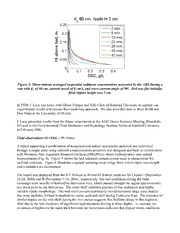
DTIC ADA523737: Sand Ripple Dynamics on the Inner Shelf
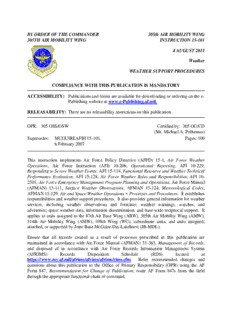
BY ORDER OF THE COMMANDER 305TH AIR MOBILITY WING 305th AIR MOBILITY WING ...
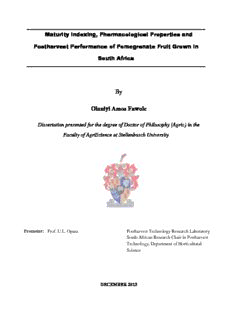
By Olaniyi Amos Fawole
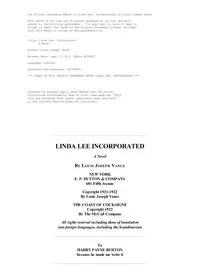
Linda Lee Incorporated by Louis Joseph Vance

TCPS 1275-2549: Piccolo

Intracranial Pressure VIII
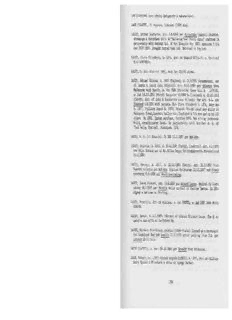
C. Augusta, labourer (1889 Alm).
![Die Gattung Amplyptems Hübner, [1819] (Lepidoptera, Sphingidae) book image](https://cdn.pdfdrive.to/media/content/thumbnails/7ea74465-ee9d-452f-81c7-5c1f9918eb0a.webp)
Die Gattung Amplyptems Hübner, [1819] (Lepidoptera, Sphingidae)
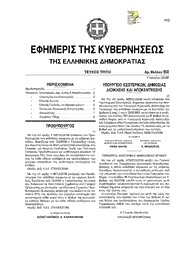
Greek Government Gazette: Part 3, 2006 no. 150
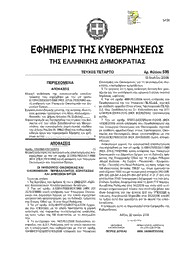
Greek Government Gazette: Part 4, 2006 no. 599
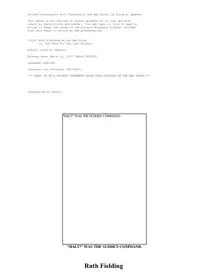
Ruth Fielding at the War Front by Alice B Emerson
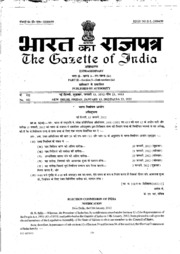
Extraordinary Gazette of India, 2012, No. 685

Wartburg Trumpet, vol. 87, no. 13 (January 11, 1993)

